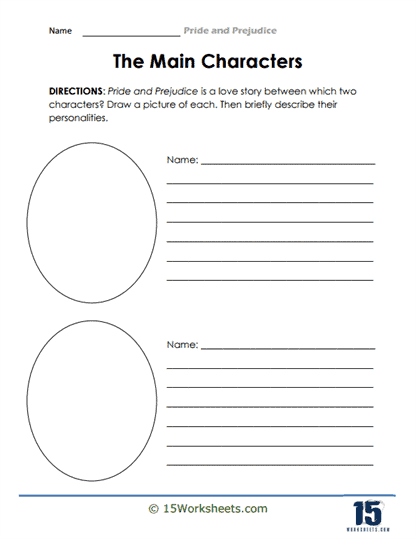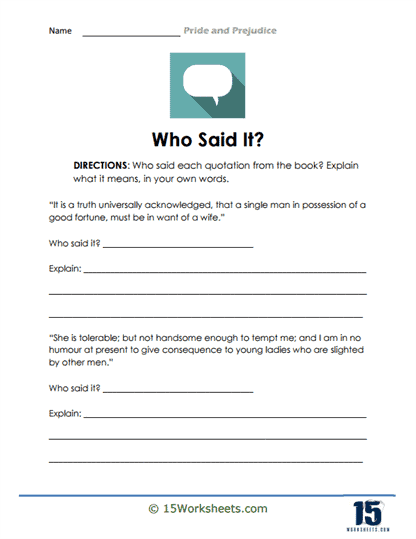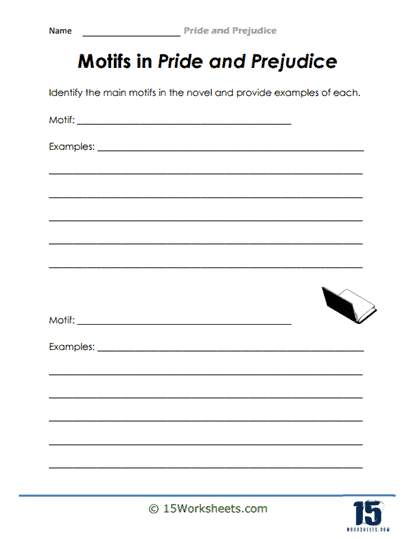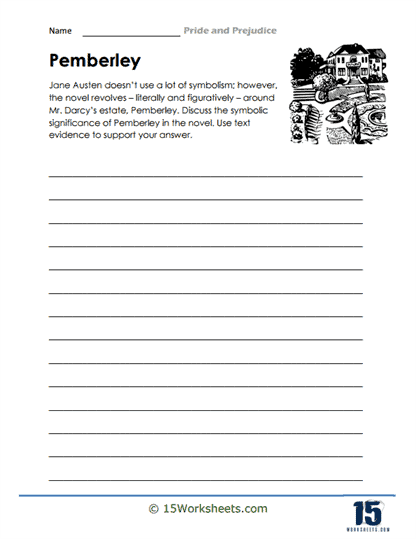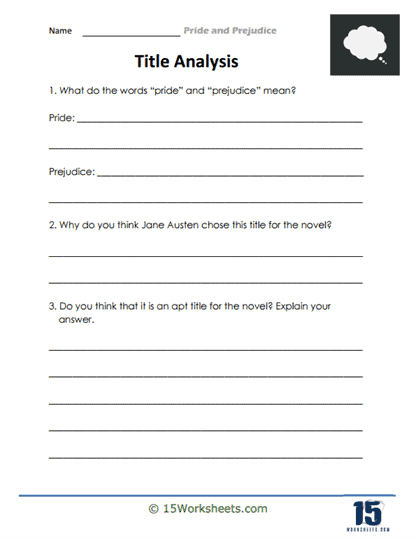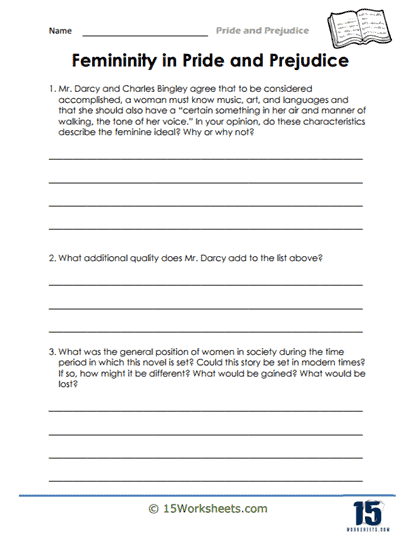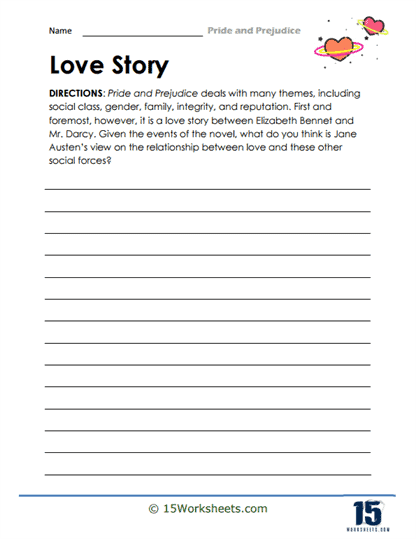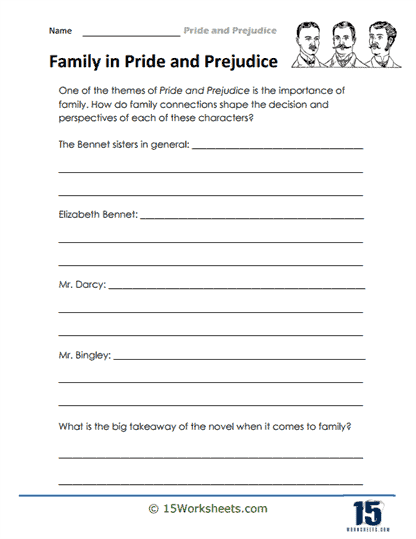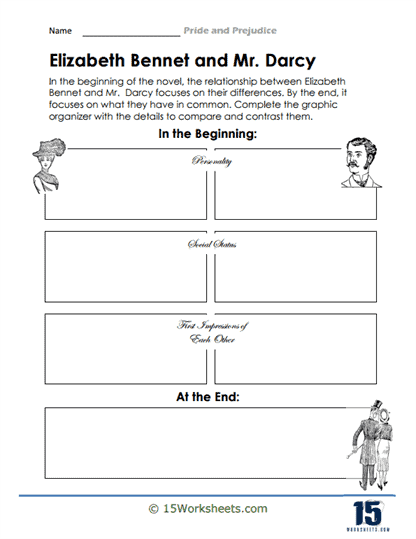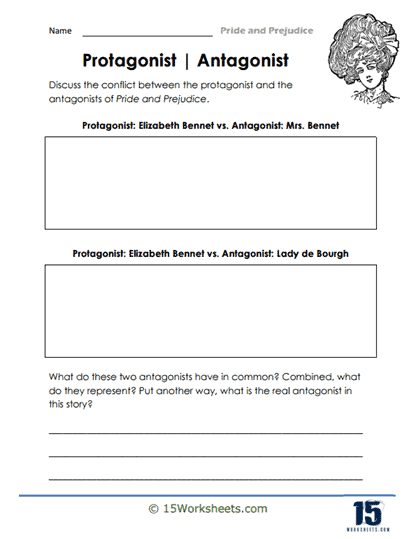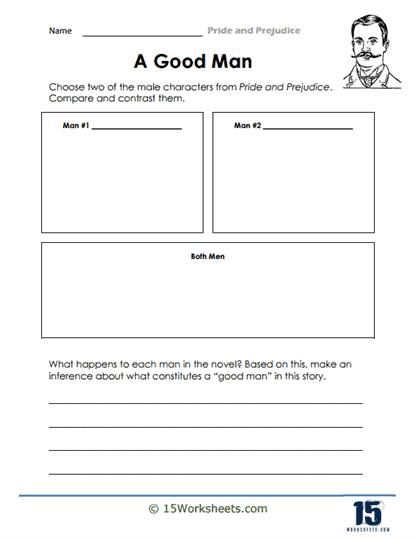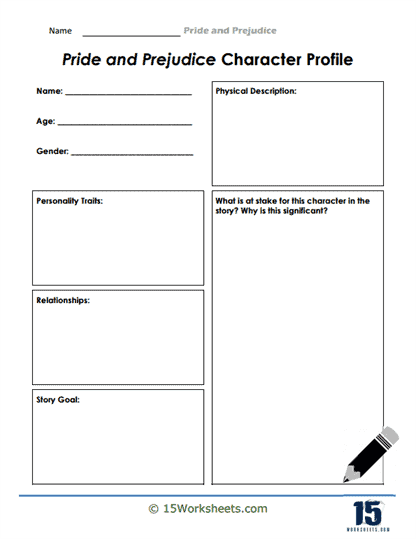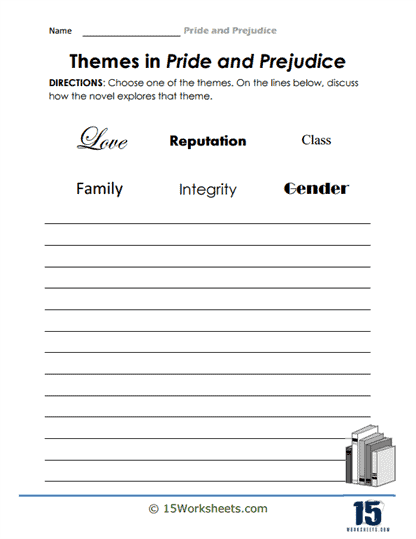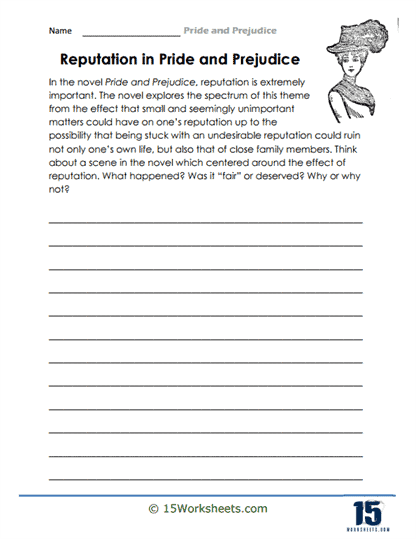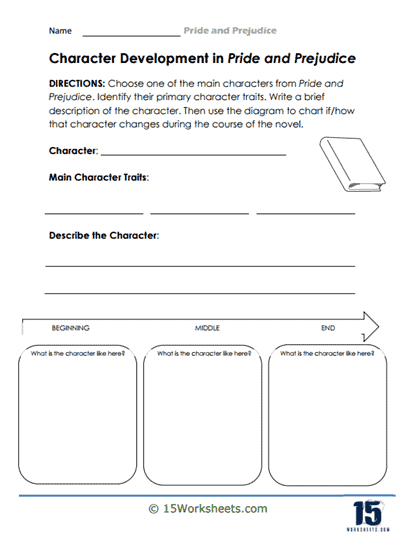Pride and Prejudice Worksheets
All About These 15 Worksheets
This collection of Pride and Prejudice worksheets is an engaging and comprehensive resource designed to immerse students in the world of Jane Austen’s timeless classic, “Pride and Prejudice.” This collection of worksheets is specifically crafted to introduce, analyze, and reflect upon various aspects of the novel, making it an essential tool for both literature enthusiasts and educators.
The Importance of Pride and Prejudice
“Pride and Prejudice” is not just any novel; it is a masterpiece of English literature that has captivated readers for over two centuries. Its enduring popularity is a testament to its universal themes and compelling characters. Exploring this novel in the classroom offers numerous benefits to students:
- Literary Appreciation: Studying “Pride and Prejudice” introduces students to the beauty of Austen’s prose and her clever use of irony, wit, and satire. It helps them develop a deeper appreciation for literature as an art form.
- Understanding Social Context: The novel provides valuable insights into the social norms, class distinctions, and gender roles of the early 19th century. This understanding fosters critical thinking and historical awareness.
- Character Development: The richly drawn characters in the novel offer opportunities for students to analyze and discuss complex human behavior, motives, and evolution, encouraging empathy and emotional intelligence.
- Critical Thinking: Exploring the themes of pride and prejudice prompts students to think critically about their own biases and judgments, helping them become more open-minded individuals.
- Language Proficiency: Austen’s writing style challenges students to expand their vocabulary and improve their comprehension skills, making it an excellent resource for language development.
This collection of Pride and Prejudice worksheets is a versatile and valuable resource for educators seeking to engage students in the world of classic literature. By delving into the themes, characters, and historical context of Jane Austen’s masterpiece, students not only develop a deeper appreciation for literature but also gain valuable insights into human nature, social dynamics, and the power of empathy. This collection of worksheets equips educators with the tools needed to guide students on a transformative literary journey, fostering critical thinking, cultural awareness, and a lifelong love of reading.
A Brief Summary of the Book Pride and Prejudice
Jane Austen’s classic, Pride & Prejudice, was published anonymously in 1813. Coming out in three volumes at the time, the novel centers on the uncharacteristic relationship between Fitzwilliam Darcy, a loaded aristocratic landowner, and Elizabeth Bennet, whose father is a country gentleman.
This behemoth of English literature reflects Austen’s incisive wit and immaculate character development. Following its release, the novel immediately impressed readers and critics alike. It took less than a year for the first edition to be sold out, and the book hasn’t gone out of print since.
Plot and Summary
Revolving around the Bennet family, Pride & Prejudice is set in the 19th-century English countryside. Mr. Bennet, a respected country gentleman, has five daughters, all with varying traits and different characters. While not very ill, he is conscious of his advancing years and is concerned about getting his girls happily married before passing away.
One of the reasons for Mr. Bennet’s urgency is that, upon his death, their family estate is due for inheritance by his nephew William Collins. As the story goes on, the Bennet sisters meet various eligible bachelors. These include the wealthy landowner Fitzwilliam Darcy, charming military officer Lieutenant George Wickham, and Collins himself. There’s also Charles Bingley, a friend of Darcy who made his fortune through his family’s interest in trade.
During a party, Bingley falls for Jane, the eldest Bennet sibling. However, the young girl downplays his affections. Moreover, the idea of Jane and Bingley doesn’t sit well with Darcy, an arrogant man who believes in the “God-given” superiority of the landed elite. And he makes no secret of his thinking during a local ball.
Shortly afterward, Collins arrives in the area, hoping to marry one of the Bennet sisters. However, Jane’s younger sister Elizabeth rejects his proposal. Instead, he ends up being engaged to Charlotte Lucas, a friend of Elizabeth.
Meanwhile, Elizabeth meets and starts developing feelings for Wickham. The attraction is mutual, but Wickham informs Elizabeth about how Darcy has denied him his inheritance, which could prove to be a barrier to their marriage.
Around the same time, Bingley suddenly has to leave for London. Elizabeth suspects Darcy of undermining his friend’s relationship with her sister. Her hatred for the landowner grows, even as the latter becomes more and more attracted to her.
Darcy eventually proposes to Elizabeth, who declines, citing his role in destroying Jane and Bingley’s relationship. Darcy explains everything in a letter afterward, talking about how he believes that Jane doesn’t love Darcy and why he denied Wickham his inheritance. The military man had tried to marry Darcy’s 15-year-old sister in the past, having already squandered his inheritance.
Happy Endings
Sometime later, the youngest Bennet sister Lydia elopes with Wickham. Elizabeth is angry and alarmed at the same time, knowing how this scandal could tarnish the Bennet sisters’ otherwise spotless reputation. When she informs Darcy about all this, he convinces Wickham to marry Lydia while encouraging Bingley to return.
The story concludes with Jane and Bingley repairing their relationship. Darcy proposes to Elizabeth again, whose hatred has subsided, and willingly accepts his hand in marriage this time.

